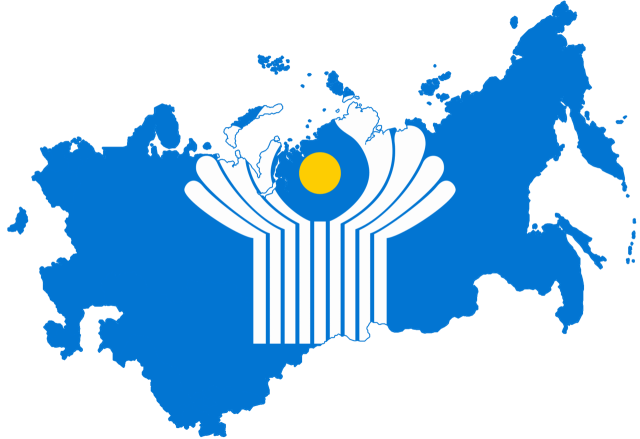CIS countries strengthened military cooperation

Author: Riccardo Rossi
The recent Commonwealth of Independent States (CIS) meeting underlined the Kremlin’s strategy to strengthen its influence in Eurasia through military cooperation and diplomacy. In the aftermath of the Ukrainian Crisis and with the increasing influence of China’s Belt and Road Initiative, Russia confirms its desire to be the principal player in Eurasia.
On April 12th, 2022, the Coordination Committee on Air Defence (PVO) meeting under the Council of Defence Ministers of the Commonwealth of Independent States (CIS) was held in Shymkent in southern Kazakhstan.
The committee was attended by delegations of the Ministries of Defence of Russia, Armenia, Belarus, Kazakhstan, Kyrgyzstan, Tajikistan and Uzbekistan, as well as representatives of the CIS Executive Committee and the Secretariat of the Council of Defence Ministers of the CIS states, representatives of the military-industrial complex and organisations in the field of air defence research and military training. One of the issues addressed during the meeting was improving the joint air defence system and strengthening multilateral military cooperation. Furthermore, they have addressed the issue of conducting joint operational and combat training activities of troops allocated to the CIS joint air defence system in 2022.
According to the CIS Executive Committee, on April 12-14th, 2022, a joint computer command post-exercise of the joint air defence system of the CIS member states “Regional Security – 2022” will also be organised in Shymkent. Military manoeuvres will be held in two stages, during which the issues of training and use of air defence troops in the Central Asian region and Kazakhstan will be worked out.
The Ministry of Defense of Kazakhstan explained that training and combat missions to counter a conditional enemy in the air would be carried out by air defence specialists at automated workplaces connected to a shared local information network. Computer command post exercises are a promising direction for improving the combat training of servicemen of many countries. The press service underlined that this method of conducting makes it possible in the shortest time to model various variants of the situation and the use of forces and means of the air defence forces.
This event follows the meeting on conducting scientific research in the field of military security of the CIS held by the International Military Center, chaired by the Secretary of the Council of Ministers of Defense of the CIS countries, Major-General Yuri Dashkin. The topic of the meeting was the coordination of work and cooperation of research groups as part of the team of authors of the common scientific work “Commonwealth of Independent States: Military Cooperation and Security in the XXI Century”.
The participants supported the proposals of the Deputy Head of the Military Academy of the General Staff of the Armed Forces of the Russian Federation, Major-General Arkady Korzhevsky, on the development of an electronic database of regulatory legal acts of the CIS countries in the field of defence and the creation of a conceptual apparatus used in solving joint issues in the military industry. The members of the team of authors also emphasised the significance and timeliness of online lectures organised according to the plan of the Council of Defense Ministers, which affect not only the development of the overall indicator of professional training of Armed Forces officers but also the emergence of a common understanding of the nature of the emergence of new challenges and threats to world security.
Risk Assessment
The CIS meeting underlined the Russian willingness to enhance its military influence in the countries of the blizhnee zarubezhe (near abroad). Due to the Ukrainian crisis and the consequent imposition of sanctions (Russian invasion of Ukraine and economy), and given the possibility of a confrontation with the United States and its European allies, Russia is moving away from the Western world and tightening ranks with its Eurasian allies.
Considering the absence of natural barriers, Russia has tried since the 15° century to conquer a strategic space that interposed between its vital territory and its enemies (buffer zone): the military campaigns towards Eastern Europe, the countries Baltics, the Caucasus and Central Asia can be explained in terms of strategic defence. Today, Moscow attempts to control these strategic areas through influence policies, diplomatic relations, and establishing military and economic entities such as the CIS, the Collective Security Treaty Organisation (CSTO), the Shanghai Cooperation Organisation (SCO) and the Eurasian Economic Union (EAUE). The Russian military objective is to prevent the entry of CIS countries into NATO and the presence of U.S. military bases within and near the Russian borders.
Furthermore, having based its economic development on the extraction and export of energy resources, Russia needs to control the transit countries. Even if the Ukrainian Conflict has brought Russia closer to China, it should be underlined that Moscow must secure its leadership in central Asia and limit the already widespread influence of the Belt and Road Initiative. Having a leading role in the regional economic and military organisation, using soft power and diplomatic relation to influence key Eurasian strategic players is part of Moscow’s strategy to ensure its borders and create stability in the region.
